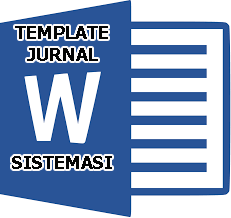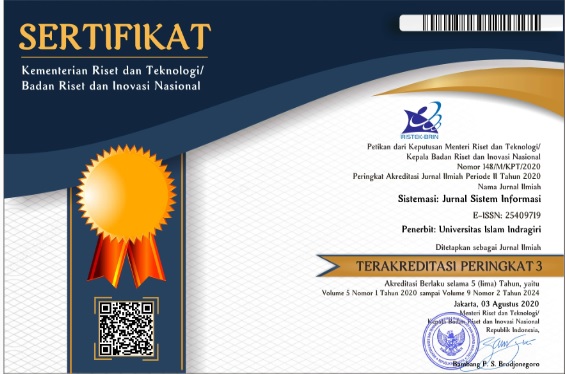UI/UX Design of Waste Management Application Using Design Thinking Method
Abstract
Full Text:
PDFReferences
D, Asteria and H, Heruman. “Bank Sampah sebagai Alternatif Strategi Pengelolaan Sampah Berbasis Masyarakat di Tasikmalaya”, Jurnal Manusia dan Lingkungan, pp. 136-141, 2016.
I. Arief, A. Muluk, A. S. Indrapriyatna, and M. Falevy, "Pengembangan Antarmuka Portal Universitas untuk Meningkatkan Pengalaman Pengguna", Jurnal RESTI (Rekayasa Sistem Dan Teknologi Informasi), vol. 5, no. 6, pp. 1052–1061, 2021. Available: https://doi.org/10.29207/resti.v5i6.3532
N. Fajri, H. Maulidya, H. Trolle, and R. I. Rokhmawati, "Perancangan Pengalaman Pengguna Aplikasi Survei Online Berbayar Antar Mahasiswa berbasis Mobile menggunakan Metode Design Thinking", vol. 5, no. 8, 2021. Available: http://j-ptiik.ub.ac.id
K. T. Nugroho, B. Julianto, and D. F. Nur MS, "Usability Testing pada Sistem Informasi Manajemen AKN Pacitan Menggunakan Metode System Usability Scale", Jurnal Nasional Pendidikan Teknik Informatika (JANAPATI), vol. 11, no.1, 2022. Available: https://doi.org/10.23887/janapati.v11i1.43209
M. Yusuf and Y. Astuti, "System Usability Scale (SUS) Untuk Pengujian Usability Pada Pijar Career Center", Komputika: Jurnal Sistem Komputer, vol. 9, no. 2, pp. 131-138, 2020. Available: https://doi.org/10.34010/komputika.v9i2.2873
H. Ilham, B. Wijayanto, and S. P. Rahayu, "Analysis and Design of User Interface/User Experience with The Design Thinking Method in The Academic Information System of Jenderal Soedirman University, Jurnal Teknik Informatika (Jutif), vol. 2, no.1, pp. 17-26, 2021. Available: https://doi.org/10.20884/1.jutif.2021.2.1.30
Interaction Design Foundation, "The Basics of User Experience Design", 2018.
S. E. Baker and R.Edwards, "How many qualitative interviews is enough?", National Centre for Research Methods.
R. Maditra, "The Design Thinker", Penggiat Design, 2020.
S, Krug, "Don’t Make Me Think! A Common Sense Approach to Web Usability, Second Edition", 2006.
J. Sauro, "Measuring Usability with the System Usability Scale (SUS)", 2011. Available: https://measuringu.com/sus
V. P. Sabandar and H. B. Santoso, "Evaluasi Aplikasi Media Pembelajaran Statistika Dasar Menggunakan Metode Usability Testing", 50 TEKNIKA, vol.7, no.1.
J. Brooke, "SUS-A quick and dirty usability scale", usability evaluation in industry 189, no. 194 (1996): 4 - 7. Available: https://hell.meiert.org/core/pdf/sus.pdf
N. Thomas, "How To Use The System Usability Scale (SUS) To Evaluate The Usability Of Your Website", 2020. Available: https://usabilitygeek.com/how-to-use-the-system-usability-scale-sus-to-evaluate-the-usability-of-your-website
A. Bangor, P. Kortum, and J. Miller, "Determining What Individual SUS Scores Mean: Adding an Adjective Rating Scale", In Journal of Usability Studies, vol. 4.
DOI: https://doi.org/10.32520/stmsi.v13i4.2845
Article Metrics
Abstract view : 986 timesPDF - 452 times
Refbacks
- There are currently no refbacks.

This work is licensed under a Creative Commons Attribution-ShareAlike 4.0 International License.









